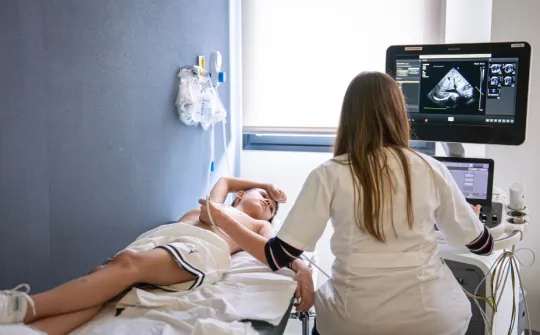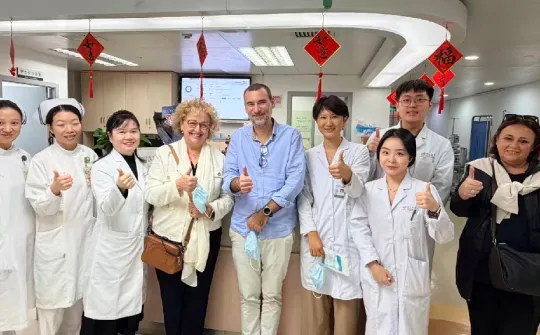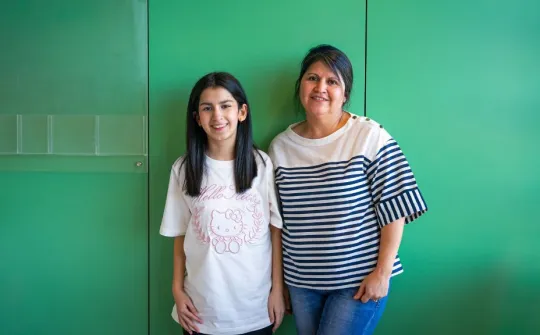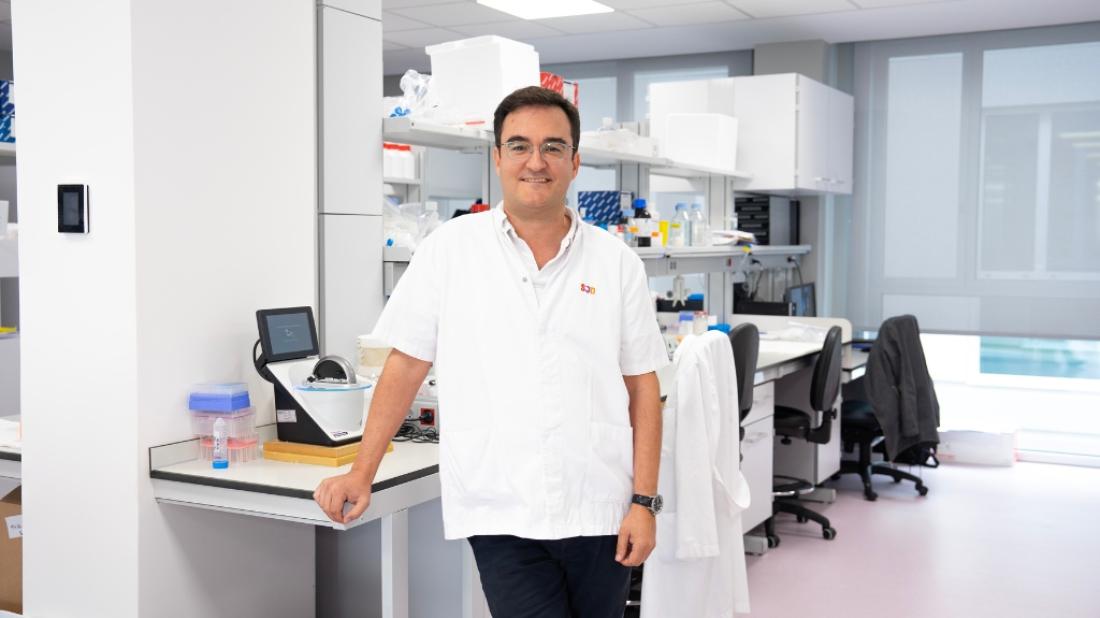
Ángel Montero offers an insider perspective on recent progress in research into pediatric cancer and other diseases, as well as clinical trials aimed at creating personalised therapies.
Ángel Montero Carcaboso joined SJD Barcelona Children's Hospital in 2010 after working at the Saint Jude Children's Research Hospital, a pediatric oncology center in the USA, already primed with a vision to launch a pioneering line of research in the field of pediatric cancer. Montero joined a group of ten people founded by Jaume Mora and Carmen de Torres. That year, the group raised around 200,000 Euros in donations for research. The team now boasts 50 professionals and counts on two million euros in donations to fund five large-scale lines of research. Head of the Pediatric Cancer Treatment Group at SJD Pediatric Cancer Center Barcelona.
‘I was in the right place at the right time. My goal is to use technology to improve drug delivery to tumors, and create safer, more effective treatments.’
The Pediatric Cancer Treatment Laboratory sounds like it deals with a broad range of projects. What research projects are going on right now?
We have several projects in progress. We have contributed towards the development of advanced therapies based on oncolytic viruses by working with leading international figures in the field. These viruses are very promising for new cancer treatments. We have a project right now that improves the delivery of medication to the brain, which can help drugs be more effective against brain tumors. Generally speaking, all of my projects look at how drugs are delivered and how they can be improved to target specific characteristics of each tumor. It would be a way to create increasingly personalised targeted therapies. We are also focusing on new laboratory models that faithfully reproduce the diseases we want to study.
What do we learn from disease models that we cannot learn by other means?
The disease models created from biopsies help us reproduce the unique aspects of each subgroup of patient, as well as having a kind of avatar that faithfully replicates each disease. Most importantly, these individualised models allow us to identify biomarkers that could predict whether a treatment is going to be effective or not. Adult tumors are very different to tumors in children and young adults in terms of the types of cancer, the types of cancerous cell, the mutations they contain, the fusion genes (which are very common in pediatric cancer), the response to treatment, etc. That is what makes it important to have pediatric-specific models.
One of the first applications of these models was to assess the prognosis of sarcomas.
Indeed, we have created various other models for different types of cancer. When we got the first models for sarcomas and neuroblastomas, we saw that in cases where a child's tumor had been successfully grafted into rats, the child's disease normally relapsed. So we then started asking ourselves whether this could be used as a prognostic factor. After ten years of study and an enormous number of samples, we were able to conclude that positive grafting was indeed a negative prognostic factor.
How does this progress in pediatric cancer research translate into concrete improvements to treatment for patients?
Our main goal is to turn everything our group researches into a phase one clinical trial. In each of our projects, no matter what the disease, we work towards finding enough evidence to approve a phase one clinical trial. We want all of our findings to turn into something applicable.
Recently the startup Gate2Brain was founded, a spin-off developed by both the Institute for Research in Biomedicine (IRB) and SJD Barcelona Children's Hospital, which aims to develop new drugs that better cross the blood-brain barrier. How is the development of these products going?
Startups are an essential vehicle for bringing our new technology to our patients in the form of a phase one clinical trial. Protecting the intellectual property of each institution is important, but more important still is licensing it to someone who can make the most of it. Around two years pass before we can make the jump to clinical trials. We still need to finalise the preclinical phase and conduct several toxicity tests in independent laboratories.
Another factor needed to get to phase one would be to attract investors who can help create the conditions necessary for a comprehensive development environment. We have a preliminary study drug candidate for use in treating glioma-type brain cancers. However, the cutting-edge peptide technology platform licensed by Gate2Brain is applicable to other active molecules, even if they are for other brain diseases, not just for cancer treatment.
Does that mean that these peptides are only for use in the pediatric age group or can they be used on adults, too?
This technology does not focus on tumors , but rather on getting the medication to a tumor, which means it can be used with all kinds of drugs and on all kinds of patients, with no age restriction. The preclinical results at SJD Barcelona Children's Hospital allowed us to request two patents that cover the use of the technology in adult-specific diseases as well. This will help us attract more investors to the project.
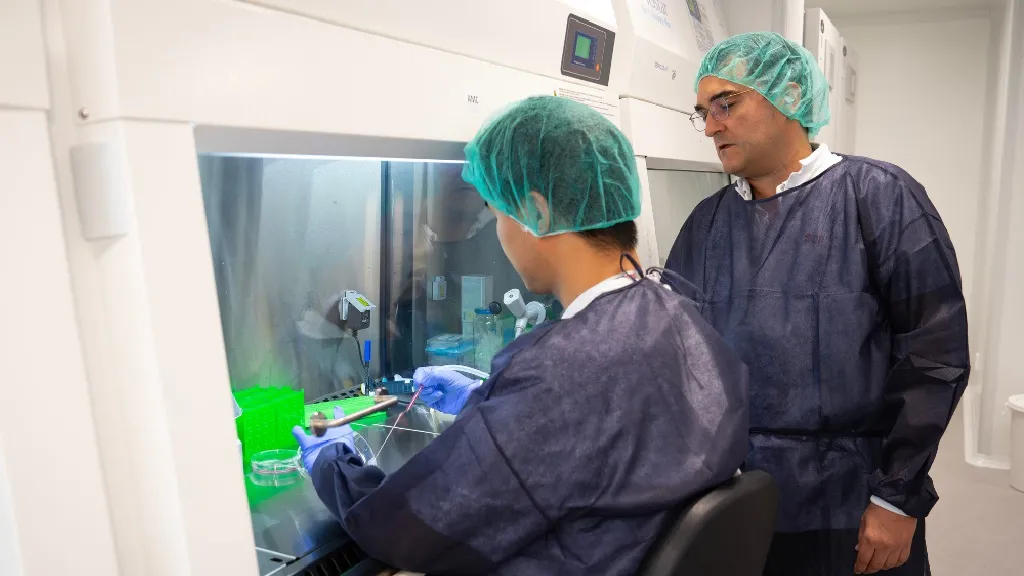
Let’s go back to one of the other lines of research we had mentioned, which holds a great deal of weight in the laboratory—research into oncolytic viruses.
In this field, we are working with Theriva, the company that created the VCN-01 oncolytic adenovirus to treat pancreatic cancer. The virus destroys cancerous cells if and when they have a target mutation in a group of genes known as the ‘retinoblastoma pathway’. It is a very common pathway in cancer cases and it has this name because it was discovered with retinoblastomas (cancer of the retina in children). However, it is not exclusive to this type of cancer.. The majority of tumors have some kind of abnormality in some part of this pathway, meaning that the virus can recognise these cells and replicate itself inside them. In fact, it can only replicate itself within this aberrant pathway, and not in normal cells. This led us to assessing the use of VCN-01 in retinoblastoma cases, as this tumor involves a mutation in this pathway.
With your research into retinoblastomas, you won the 2019 Vanguardia Science Award. How has the research progressed in the last five years?
We are currently analysing data from phase one of the study, which recently ended. On a preclinical level, we are still working on improving adenovirus-based treatments and applying them to other tumors when combined with drugs in the Camptothecin family. As such, in the field of oncolytic adenovirus research, there has been a shift in thought. It was initially thought that these viruses acted primarily through oncolysis, destroying cancerous cells. However, we now know that they also stimulate the immune system, exposing the tumor and leaving it vulnerable to the body's immune cells.
In the middle of this labyrinth of research, how have state-of-the-art techniques like genetic sequencing affected your research into pediatric cancer?
They play a crucial role. For incurable diseases in children—such as diffuse midline gliomas, for example—15 years ago we did not even know what caused them. Now we are almost 100% certain that these patients have the same genetic mutation, consisting of a single amino acid change in the same protein every time. Progress like this is thanks to the oncologists and pathologists taking tumor samples from patients over the years, despite not knowing exactly what change it could bring about in the future. This was the vision of Jaume Mora, for example, our Scientific Director, and Guillermo Chantada, our Outreach Director. Both of them, working 10,000 km apart and still not having met in person, simultaneously built up a collection of pediatric cancer samples that have proven invaluable to research. Thanks to these resources and modern technology, we are now able to rapidly categorise different types of tumors, make faster decisions about treatments and prognosis, detect therapeutic targets and also recommend targeted treatments.
What role have parent and patient associations played in your research and developing treatments?
They are the heart and soul of a huge portion of the research done at SJD. Families give from a place of pure generosity to help bring our projects to life, especially when donating affected tissues from their children. Something that will never cease to surprise me is that, despite having gone through the worst parts of the disease, many families wish to stay in touch with our Hospital. Perhaps the most normal reaction would be to forget about us. Nevertheless, many families bring ideas to the table, interact among themselves, organise fundraisers and continue to play a role in research. Right now, more than half of our lab's budget comes from donations made by families.
What do you think the future of pediatric oncology holds in the next twenty years?
I imagine that immunotherapy will be much more advanced, not just for leukemia. In twenty years’ time, I hope we will have discovered why solid cancers go almost undetected by the immune system. There is something in them that makes them invisible, and that is why they are so hard to treat with immunotherapy, even for treatments as potent and well-known as CAR-T. I think that we will have new medications for brain tumors, whose activity will not be restricted by the blood-brain barrier because we will have developed an effective delivery technology to cross it. I also hope that selective therapies will have a lead role, with treatments that carry targeted radiopharmaceuticals directly to a tumor.
To finish up, what do you think has been the biggest frustration in your career to date, and your proudest moment?
Sometimes I have felt frustrated, with or without reason, when I have seen research projects I considered to be finished and assumed would have a huge social impact that did not have the reception I had hoped for. Perhaps this is because we live in a kind of bubble, and we naively think we are going to be the next big thing, but then the competitive society we live in gives us a reality check and smacks us back down to Earth, which is not a bad thing, really. This small moment of frustration is nothing in comparison to the happiness we feel knowing that the families we mentioned earlier are the ones who are most thankful for our progress, no matter how small a step forward it may be, which always encourages us to keep going. They understand the significance of every step forward and they celebrate each one. Families are our driving force, our source of energy, and truly make it all worthwhile.
